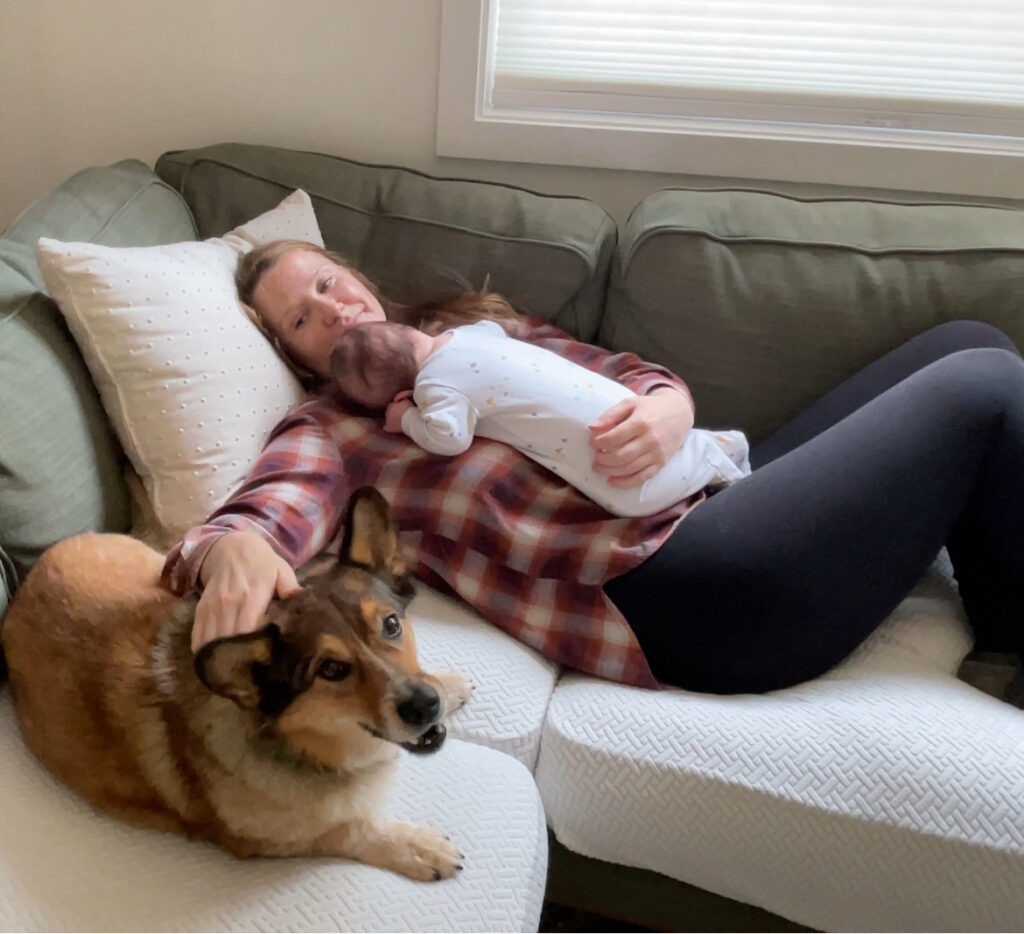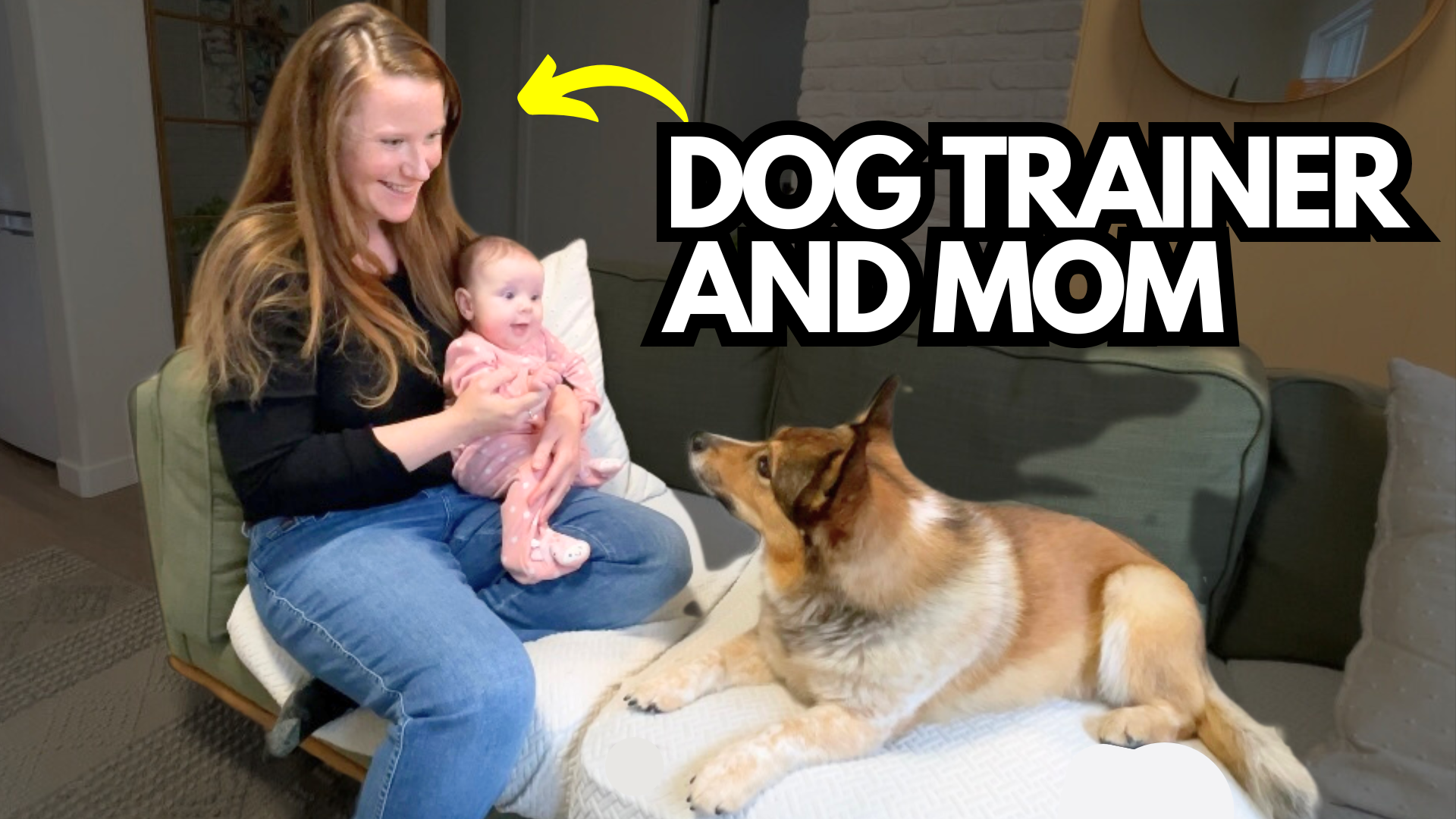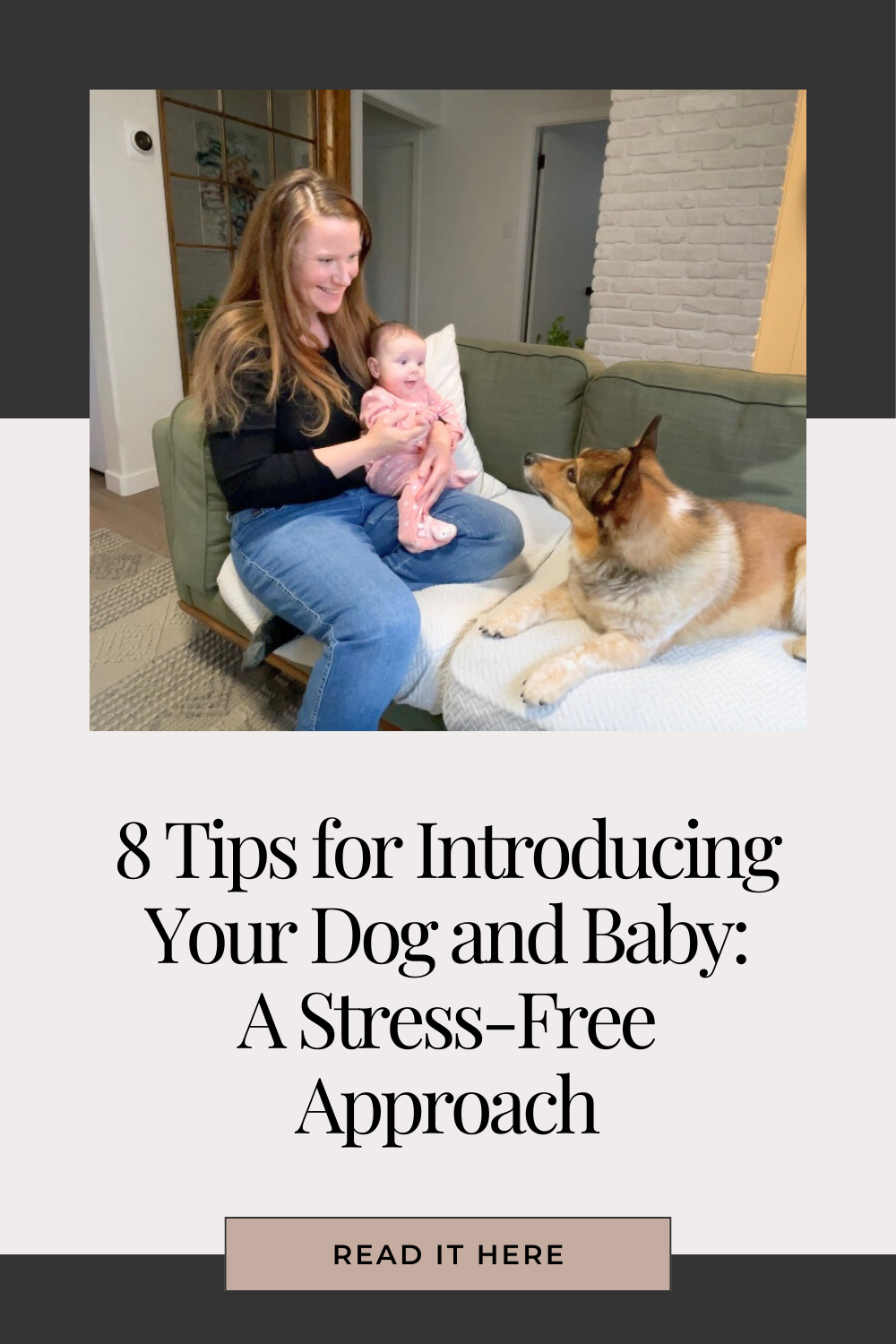8 Tips for Introducing Your Dog to Your New Baby: A Stress-Free Approach
Bringing your baby home is an incredibly exciting moment, but if you’re a dog parent, there’s probably a nagging worry in the back of your mind: How will my dog react to this tiny new person? It’s a valid concern, and one that many parents share.
After all, we humans have months to prepare for the arrival of a baby, but for our dogs, it can feel like a sudden and overwhelming change. With a little preparation and the right mindset, though, you can set the stage for a smooth introduction between your dog and your new baby, ensuring that both your furry friend and little one can develop a positive relationship.
As both a dog trainer and a new mom, I’ve gone through this process firsthand. So today, I’m sharing eight essential tips to make introducing your dog to your baby as stress-free as possible. Let’s dive in!
Prefer video content? Watch on Youtube instead:
Tip 1: Remain Flexible
One of the most important lessons I’ve learned as a dog trainer—and now as a new mom—is that things rarely go according to plan. You might have a perfect scenario in mind for an easy, calm first meeting between your dog and baby. Unfortunately life often has other ideas.
I had a very specific plan for introducing my dog to my baby. I wanted to go inside solo to greet my dog and let her get some of her excitement out, then go on a stroller walk with her and the baby. This would allow her to smell and hear the baby in a low stress way before being formally introduced at home. This would be an ideal first introduction, but due to injuries I had to adjust.
The key takeaway here is to stay flexible. Dogs are incredibly intuitive and can pick up on our energy and mood. If you’re rigid about how things should go, it can lead to stress for both you and your dog. Instead, focus on making the process calm and positive, even if it doesn’t look exactly how you envisioned it.
Tip 2: Enlist Help
It’s crucial to have a second person around for the initial interactions between your dog and baby. This allows one person to focus on the baby while the other can manage the dog. For the first few interactions, I recommend keeping your dog on a leash to maintain control in case you need to step in. Just be sure to keep the leash loose—tension on the leash can increase your dog’s stress and lead to unwanted behaviours.
Having someone else there also helps reduce the pressure on you. The more hands on deck, the smoother the experience will be for everyone.
Tip 3: Don’t Force Interactions
A common mistake many people make is thinking that their dog needs to interact with the baby right away. This pressure can backfire, leaving your dog feeling anxious or overwhelmed. Instead, introduce the baby slowly and calmly.
When you’re ready, have one person hold the baby while you walk your dog into the room. Keep some distance between them initially, and every time your dog looks at the baby calmly, reward them with a treat. This helps your dog associate the baby with positive experiences, like food and praise. Over time, you can allow more direct interactions, but take things slow.
Remember, your goal isn’t to have your dog touch the baby right away—it’s about helping them feel calm and comfortable around the baby.
Tip 4: Positively Condition the Sound of Baby Crying
Let’s face it: babies cry. A lot. And while that’s normal to us as parents, for dogs, it can be distressing. Their hearing is much more sensitive than ours, and the high-pitched sound of a baby’s cry can be startling.
To help your dog get used to the sound, start by pairing baby cries with something positive. Keep a stash of long-lasting treats—like stuffed Kongs or puzzle toys—on hand. When the baby cries, give your dog one of these treats. This creates a positive association with the sound of crying and helps reduce stress over time.
If you have time before the baby arrives, consider starting sound conditioning by playing recordings of baby cries while pairing that experience with a reward. The more your dog hears and associates the sound with rewards, the more relaxed they’ll be when your baby arrives.
Tip 5: Try to Avoid Saying “No”
When tensions are high and you’re adjusting to life with a newborn, it’s easy to fall into the habit of saying “no” to your dog when they behave in ways you don’t want. While this might seem like the obvious response, constantly scolding your dog can make them associate the baby with negative feelings, which we definitely want to avoid.
Instead try to use clear, positive cues to guide your dog. For example, instead of saying “no” when your dog jumps up, teach them to sit for a calm greeting. If your dog is too interested in the baby, ask them to go to their bed or place. When your requests are specific and clear, it helps your dog understand exactly what’s expected—and it builds a more positive relationship between your dog and the baby!
Tip 6: Create a Safe Space for Your Dog
While we want our dogs to enjoy being around the baby, it’s important to recognize that sometimes they just need a break. Babies are noisy, unpredictable, and can be overwhelming for dogs, especially when they’re trying to adjust to so much change.
Designate a quiet, safe spot where your dog can retreat if they need some alone time. This could be a dog bed in a quiet corner or another spot in the house where your dog can relax. If you notice your dog using this space on their own, make sure to reward them for doing so. You want your dog to know that it’s okay to take breaks and that their space is respected.

Tip 7: Don’t Forget About Your Dog
It’s easy to get caught up in the demands of caring for a newborn, and your dog might start to feel neglected. It’s completely normal for your attention to shift to the baby, but try to maintain little moments of connection with your dog. Whether it’s a quick cuddle, a short play session, or a few minutes of petting while you’re holding the baby, these moments help reassure your dog that they are still an important part of the family.
We want your dog to see the baby as a positive addition to the family, not as a replacement for them.
Tip 8: Remember, Change Takes Time
Even if you follow all of these tips, bringing a baby into your home is a huge life change—for both you and your dog. Dogs are creatures of habit, and a new baby represents a lot of new experiences and challenges for them. It’s important to give your dog the time and space they need to adjust.
Instead of setting a strict timeline for how your dog should react, aim for a positive and safe experience. Don’t pressure your dog into “liking” the baby right away. Just like humans, dogs need time to adapt to major life changes.
Conclusion: Be Patient and Keep Things Positive
Introducing your dog to your new baby can be a challenging, but incredibly rewarding experience. By staying flexible, creating positive associations, and being mindful of your dog’s needs, you can set the stage for a harmonious relationship between your dog and baby.
And remember—soon enough, your baby will be old enough to drop food on the floor and your dog will have a whole new reason to love their new little family member!
For more tips on life with dogs and babies, be sure to check out my full playlist here:
- Get Your Dog Ready for a Baby With These 7 Simple Tips!
- 8 Tips for Introducing Your Dog and Baby: A Stress-Free Approach
- Feeling Guilty for Your Dog After Baby? You’re Not Alone!
- 12 Tips for Stress-Free Walks With a Dog and Baby
- Dog Enrichment Ideas When You’re Unable to Go On Long Walks
- I’ll also link my entire dog + baby Youtube playlist here:
Happy training!
Disclosure: Happy Hounds uses affiliate links. Purchasing with these links will not cost you any extra, but I get commissions for purchases made through these links. Affiliate links help me to continue to offer free resources & blog posts. I would love if you used them!


+ show Comments
- Hide Comments
add a comment